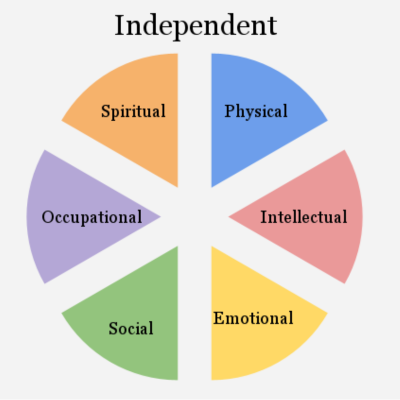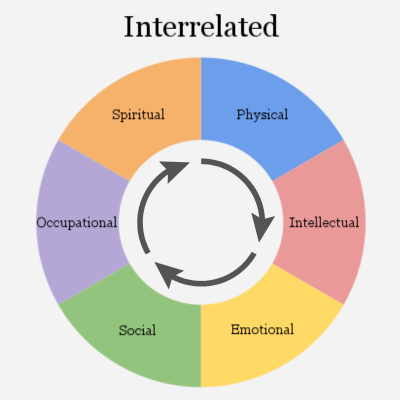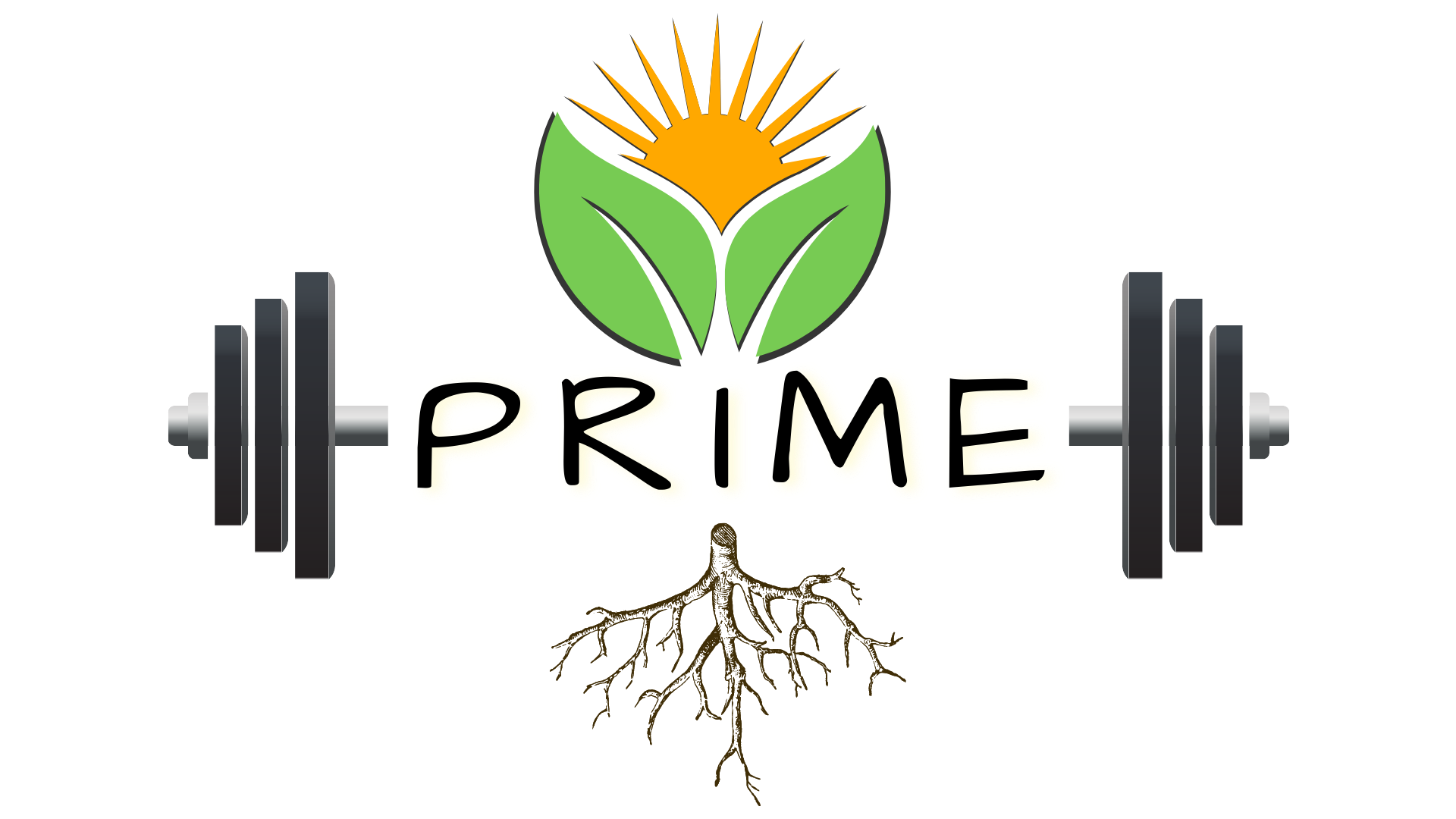Holistic fitness is a lifestyle that promotes holistic health above all else. When people think about what ‘fitness’ means, they often think of body composition, physical performance, or athletic capabilities. Holistic fitness and the six dimensions of wellness provide a framework for improving our health and quality of life. It’s the idea that there’s more to fitness than having a strong, aesthetic body. Being mentally and spiritually ‘fit’ requires certain habits and routines, in much of the same way that being physically fit does.
To understand this concept further, let’s define what holistic health is.
What is Holistic Health?
The word holistic means looking at something as a whole, rather than one individual part. Therefore, holistic health means overall health.
In Western society, our perception of health is usually one-dimensional with a strong emphasis on the physical body. In addition, we often look at health as being black-or-white, meaning you’re either healthy, or sick. There’s no in-between. But that’s not how it really works. Just because you don’t feel ‘sick’, does not mean you’re doing well. This is where the term ‘wellness’ comes into play.
Difference Between Health And Wellness
The words ‘health’ and ‘wellness’ are often used interchangeably. Although they are similar and sometimes can mean the same thing, they are not exactly the same.
Health is your current state, or a snapshot of how you’re doing right now. Your health can be great one day, and poor the next.
Wellness on the other hand is more of a lifestyle than your current state. It’s an approach to life that promotes self improvement and moving in a positive direction.
Next we’ll take a look at each of the six dimensions of wellness according to the National Wellness Institute.

6 Dimensions of Wellness
While health is often seen as one-dimensional (i.e. physical health), wellness is multi-dimensional. There are 6 dimensions of wellness and each one is measured on a spectrum rather than ‘black-or-white’.
Since each dimension is on a spectrum, it means we can constantly improve or get worse in each aspect of our lives. Let’s take a look at each of the six dimensions of wellness.
Physical Wellness
Put simply, this is having a healthy body free of sickness or disease. The four main habits to improve physical wellness are:
-
-
-
-
-
-
-
- Eating a balanced diet
- Exercising consistently (lifting weights)
- Maintaining a regular sleep cycle
- Avoiding drugs & alcohol
-
-
-
-
-
-

For men on self improvement, optimizing your testosterone is crucial for having a strong, healthy body. One of the best ways to improve your physical health is by eating a balanced diet which consists of: lean protein, healthy fat, fruits, and vegetables. It’s also important to limit processed food and refined sugars as much as possible.
Another way to treat your body right is by hitting the weights. Cardio is good for your health, but weight training is especially important for your physical development. Building muscle is not just for appearances. Having muscle mass is also good for your testosterone, metabolism, bones & joints, energy levels, and immune system.
Intellectual Wellness
There are two sides to having good mental health, with intellectual wellness being one of them. Intellectual wellness is about cognitive function, or how well your brain works.
This includes:
-
-
-
-
-
-
-
- Memory & Learning
- Attention span
- Decision making
- Logic & Reasoning
-
-
-
-
-
-

Intellectual wellness is learning how to think for yourself, solve problems, and draw conclusions based on available information. It’s about mental stimulation, creative pursuits, and expanding your knowledge of the world around you.

Emotional Wellness
Since your brain also controls your emotions, this is the other half of mental health. Emotional wellness deals with your psychology, or how your thoughts lead to emotions and behaviors.
Emotional wellness is about having a positive outlook on life, and about yourself. It’s learning to accept your feelings as they arise, while dealing with negative emotions in healthy ways. Rather than pretend like emotions and feelings don’t exist, it’s better to become aware of them and how they can lead to certain behaviors.
This will allow you to control your emotions and feelings during challenging times. Men must practice stoicism to some degree if they want to reach their full potential. Stoicism means that you can endure pain and hardship without letting your emotions get in the way.
Social Wellness
This involves building community with those around you, strengthening relationships, and making a positive impact on the lives of others.
Social wellness is also about improving your communication skills so that you can form meaningful connections with people.

This does not mean you need 100 friends, or even 10. In my opinion, social wellness is more about the depth of your connections rather than the quantity. A wise man once said:
You are the average of the five people you spend the most time with.
Your time, attention, and energy is extremely valuable. So while it is important to have meaningful connections with people, I think an important aspect of social wellness is actually learning how to be alone when it benefits you.
Occupational Wellness
This is about developing the necessary skills to advance in your profession and finding satisfaction in the work you do. This doesn’t necessarily mean loving what you do for a living, but there’s something to be said about making the most of any position you’re in. Find something that makes you want to show up and improve each day.

You can work towards better occupational wellness by practicing your skills and providing value to the marketplace. Your occupation is not just limited to your career. Whether you’re a student, entrepreneur, or volunteer, occupational wellness is about performing your best in whatever you choose to do.
Spiritual Wellness
Spirituality is deeper than religion. Spiritual wellness is about finding your true purpose in life and walking a righteous path. The word righteous means virtuous, or having principles and morals that you live by. Another way that you can think about spirituality is connecting with the energy around you, and the energy within you.

Spiritual wellness really depends on the individual. I believe in the God of the Bible. You might believe in something else. We don’t always have to try and convince others what we believe in. Sometimes it’s better to just live it and let our actions do all the talking.
Some of the habits that have helped me improve my spiritual wellness include:
-
-
-
-
-
-
-
- Prayer
- Meditation
- Journaling
- Not watching sexually explicit content
-
-
-
-
-
-
I wholeheartedly believe that if you practice these habits on a daily basis, your life will change for the better.
The Paradox of “Independent vs. Interrelated”
Each of the six dimensions of wellness are independent, but also interrelated. That may sound contradictory, and you would be right. It’s a paradox.
What it means is, just because you improve in one area does not necessarily mean you improve in the others (independent). But at the same time, when you improve or get worse in one of these areas, it tends to affect the others (interrelated).


The Six Dimensions of Wellness Are Independent
One example is how you can build an amazing physique by focusing all of your efforts on building muscle and getting shredded. But that doesn’t mean you have healthy social relationships or a spiritual connection. If bodybuilding is all you care about and your self worth is tied into how you look, you neglect growing in other important areas.
Likewise, you can excel in your career by focusing all your time and effort into it. But if you eat a lot of junk food and don’t exercise, you’ll upset the wellness balance and experience health problems.
These are just a couple examples of how each of the six dimensions of wellness are independent. However, although the wellness dimensions are independent, they also work together in forming a complete picture of your holistic health.
The Six Dimensions of Wellness Are Interrelated
An example of how each of the six dimensions depend on one another is how your diet affects your overall health. Eating healthy is good for you physically — food gets broken down, absorbed, and the nutrients become a part of every cell in your body.
But on top of that, your brain feeds off the energy and nutrients you put in. This directly affects your cognitive function. Your brain also regulates your emotions and how you experience every situation. Because of this, the food you eat directly affects your mental health.
Good nutrition also increases productivity, helping you to focus on your work and produce better results. It helps you concentrate on difficult tasks and manage stress, making you more effective on the job.
Healthy eating can also lead to better social wellness because it helps you reach your fitness goals and feel better about yourself. This impacts your self esteem and self confidence in a positive way, which leads to having better social interactions.
In a spiritual sense, you’ll give off positive energy and attract people into your life. This leads to a realization of your purpose and puts you in a position to help others.
This is one example of how each of the six dimensions of wellness are interrelated. Eating healthy affects more than just physical health.

Conclusion
The words: health, fitness, and wellness are often used interchangeably. However, they are not the same things. Health refers to a current state of being, whereas wellness describes a lifestyle. Fitness is only measured along the physical dimension, but holistic fitness is about improving every aspect of our lives. The six dimensions of wellness is a framework that we can work on to improve our quality of life and holistic health.
